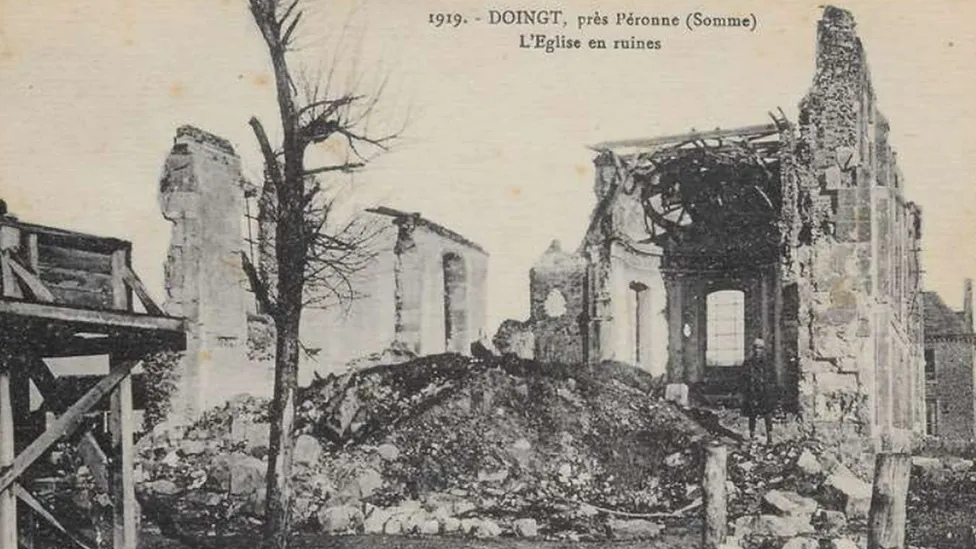A crucifix plucked from the rubble of the Somme battlefield and brought to England is to be returned to its original home in France.
The cross was originally from the church of Doingt-Flamicourt, which was destroyed, along with the rest of the town, during the World War One battle.
It is believed it was salvaged by a British Army chaplain and placed in All Saints Church in Tinwell, Rutland.
More than a century later, it is to be taken back.
Doingt, near Amiens, was one of many settlements wiped from the map during the 1916 campaign that claimed more than 300,000 lives.
Former All Saints church warden June Dodkin said: "On Remembrance Day 2018 we were commemorating the centenary of the war and the village priest asked if there was anything interesting in the church.
"We suggested the crucifix which we knew, from records, had come from Doingt.
"There was a 16-year-old boy in the congregation, Jonno McDevitt. He looked at it and said 'shouldn't we send it back?'
"We were all a bit stunned. It had never occurred to anyone as we thought Doingt was destroyed.
"But he got his phone out, looked it up and that's when we discovered the place - and the church - had been rebuilt."
Mrs Dodkin said that discovery led to emails being sent to Doingt's mayor, raising the prospect of sending the cross back.
The coronavirus pandemic put the plan on hold, but a 10-strong delegation from Tinwell will take the 22in (56cm) oak cross, bearing the figure of Jesus, back to Doingt in June.
Mrs Dodkin added: "They are extremely excited about the prospect of the cross being returned in Doingt - they were very surprised to hear it has been in our church all this time - and we are looking forward to taking it.
"They are arranging a number of events, receptions and ceremonies to mark the occasion.
"It sounds like we will be very well looked after."
Rev Olwen Woolcock, priest-in-charge of the parishes of Ketton and Tinwell, said there had been several false starts in the attempts to discover how the cross had come from Doingt to Rutland.
The answer came, she said, from Sir Giles Floyd who worships at All Saints who explained the cross was found by Parson Percy Hooson.
Parson Hooson served during the Somme campaign as a chaplain and later took up a post at Tinwell in 1932.


